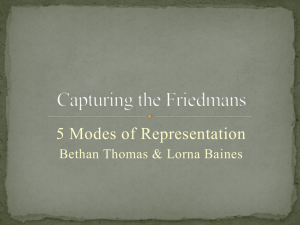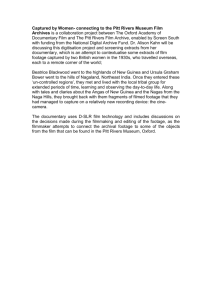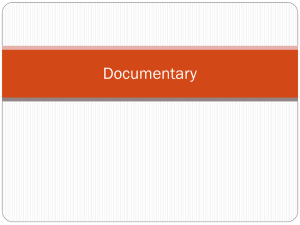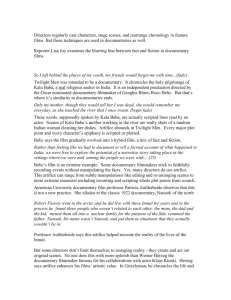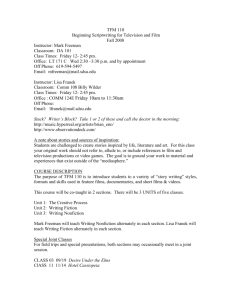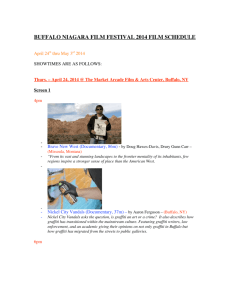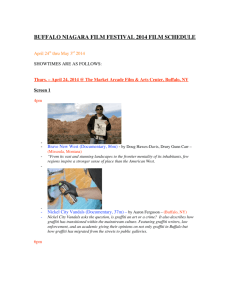The Documentary Film
advertisement
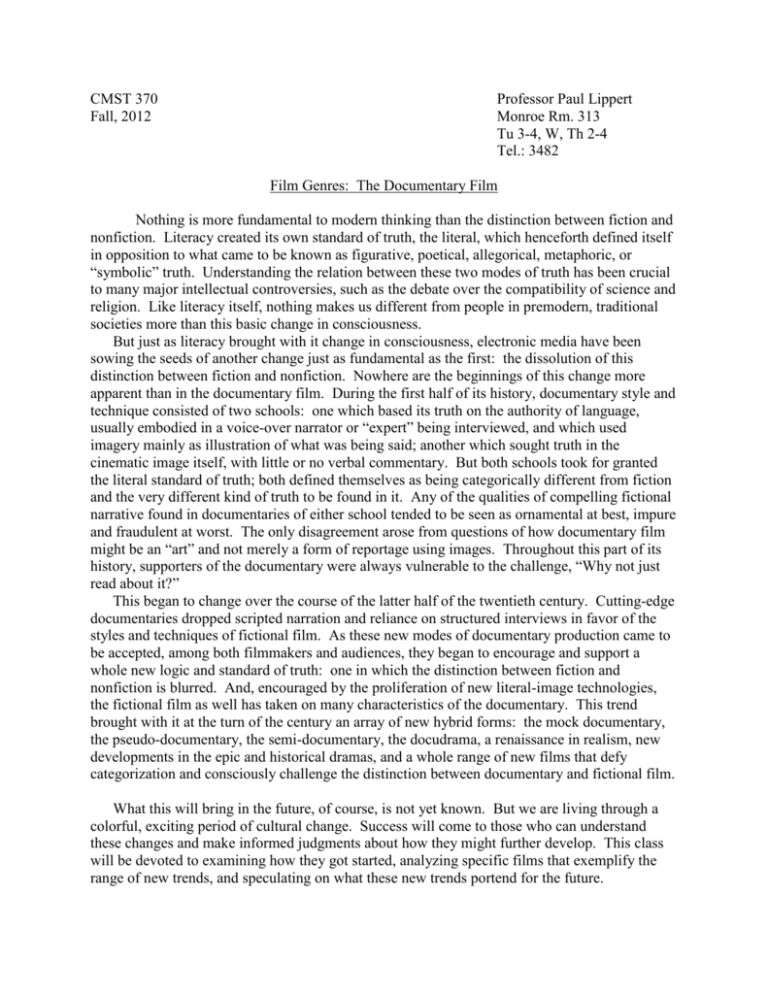
CMST 370 Fall, 2012 Professor Paul Lippert Monroe Rm. 313 Tu 3-4, W, Th 2-4 Tel.: 3482 Film Genres: The Documentary Film Nothing is more fundamental to modern thinking than the distinction between fiction and nonfiction. Literacy created its own standard of truth, the literal, which henceforth defined itself in opposition to what came to be known as figurative, poetical, allegorical, metaphoric, or “symbolic” truth. Understanding the relation between these two modes of truth has been crucial to many major intellectual controversies, such as the debate over the compatibility of science and religion. Like literacy itself, nothing makes us different from people in premodern, traditional societies more than this basic change in consciousness. But just as literacy brought with it change in consciousness, electronic media have been sowing the seeds of another change just as fundamental as the first: the dissolution of this distinction between fiction and nonfiction. Nowhere are the beginnings of this change more apparent than in the documentary film. During the first half of its history, documentary style and technique consisted of two schools: one which based its truth on the authority of language, usually embodied in a voice-over narrator or “expert” being interviewed, and which used imagery mainly as illustration of what was being said; another which sought truth in the cinematic image itself, with little or no verbal commentary. But both schools took for granted the literal standard of truth; both defined themselves as being categorically different from fiction and the very different kind of truth to be found in it. Any of the qualities of compelling fictional narrative found in documentaries of either school tended to be seen as ornamental at best, impure and fraudulent at worst. The only disagreement arose from questions of how documentary film might be an “art” and not merely a form of reportage using images. Throughout this part of its history, supporters of the documentary were always vulnerable to the challenge, “Why not just read about it?” This began to change over the course of the latter half of the twentieth century. Cutting-edge documentaries dropped scripted narration and reliance on structured interviews in favor of the styles and techniques of fictional film. As these new modes of documentary production came to be accepted, among both filmmakers and audiences, they began to encourage and support a whole new logic and standard of truth: one in which the distinction between fiction and nonfiction is blurred. And, encouraged by the proliferation of new literal-image technologies, the fictional film as well has taken on many characteristics of the documentary. This trend brought with it at the turn of the century an array of new hybrid forms: the mock documentary, the pseudo-documentary, the semi-documentary, the docudrama, a renaissance in realism, new developments in the epic and historical dramas, and a whole range of new films that defy categorization and consciously challenge the distinction between documentary and fictional film. What this will bring in the future, of course, is not yet known. But we are living through a colorful, exciting period of cultural change. Success will come to those who can understand these changes and make informed judgments about how they might further develop. This class will be devoted to examining how they got started, analyzing specific films that exemplify the range of new trends, and speculating on what these new trends portend for the future. Required Reading: Jack C. Ellis, The Documentary Idea (Prentice Hall, 1989) Suggested Reading: Stella Bruzzi, New Documentary, 2nd ed. (Routledge, 2006) Course Requirements: 1. Weekly Reaction Papers (50%) 2. Take-Home Essay Exam on Ellis (50%) Date Film A28 This is Spinal Tap S4 Capturing the Friedmans S11 Capturing Capturing: Documentary of a Documentary and Its Effects S18 Medium Cool S25 The Clowns O2 Fata Morgana, Lessons of Darkness O16 Sans Soleil O23 I’m Not There O30 I’m Still Here N6 Exit Through the Giftshop N13 Catfish N20 Blair Witch Project? Borat? Other? N27 The Mill and the Cross D4 Celine and Julie Go Boating D11 Celine and Julie Go Boating, continued




